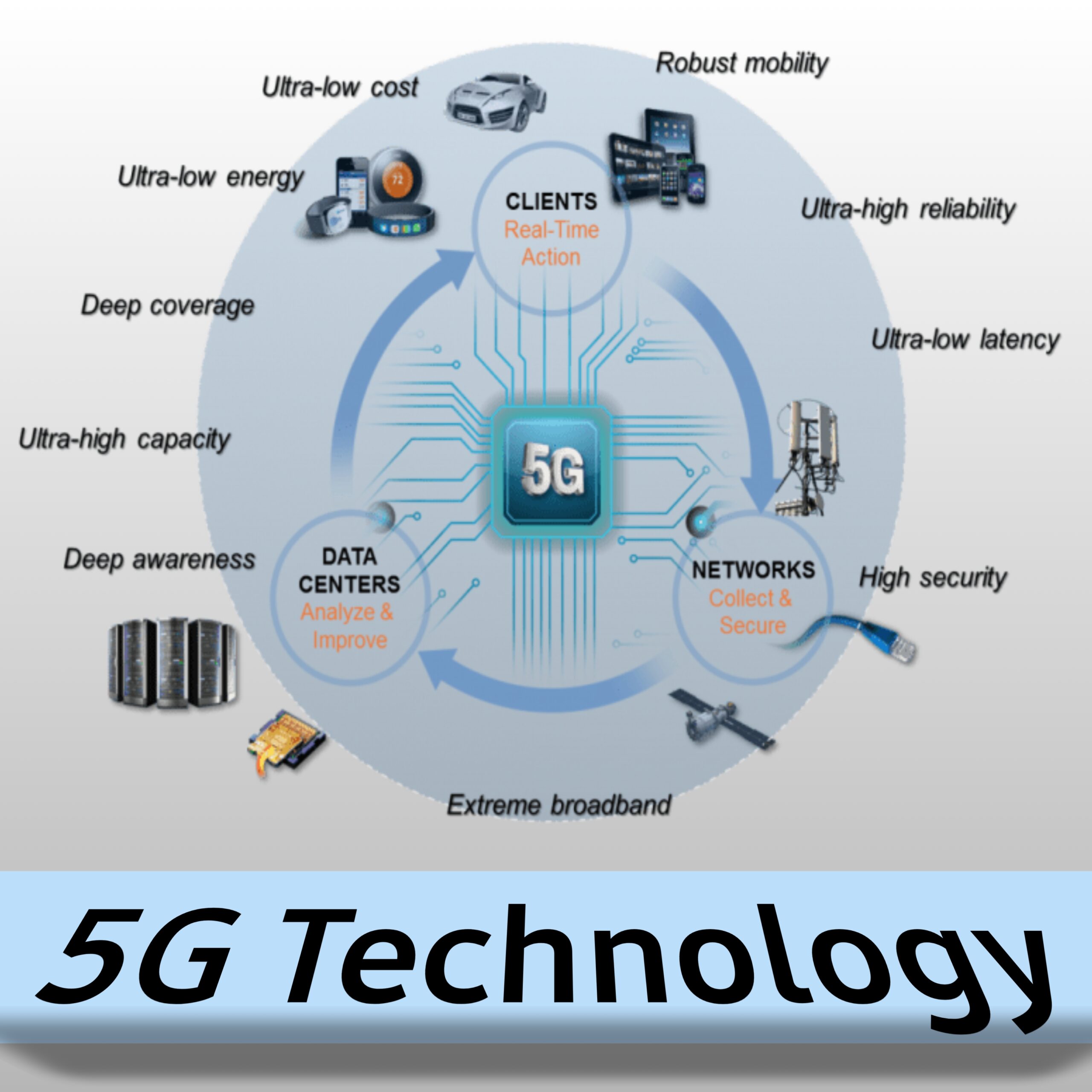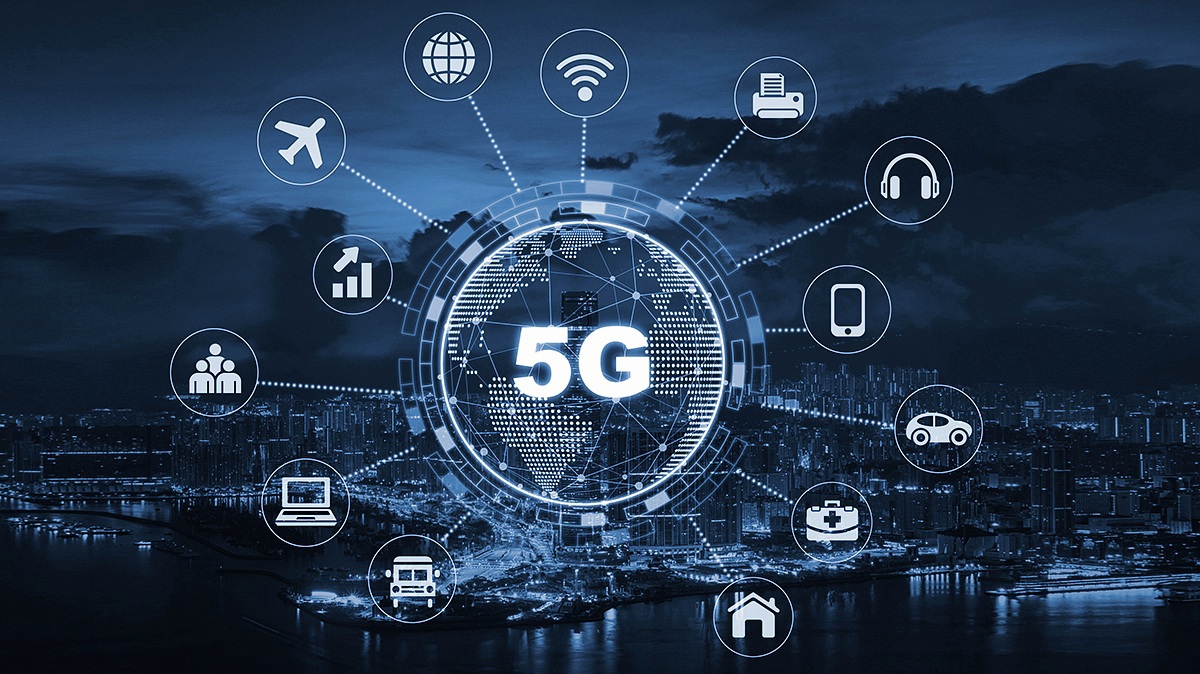What is 5G Technology-
The most recent version of wireless communication technology is known as 5G or fifth-generation technology. When comparing its speed, capacity, latency, and connection to earlier generations (such as 3G and 4G), it offers a major improvement.
The fifth generation of mobile networks, or 5G, uses fast mobile broadband networks. It is a new wireless technology used globally, after 1G, 2G, 3G, and 4G networks. With this, a revolution in technology and telecommunications has begun. Continuous coverage, high data rates, minimal latency, and a very dependable communication system are all goals of the 5G service. To link practically all equipment and devices, 5G builds such a network. Users using the 5G network may enjoy speeds of up to 20 GB per second. It is opening up numerous options for society, businesses, and individuals.
The following are some of the main traits and qualities of 5G technology:
With the 5G network, internet speed has increased by 20 to 100 times (up to 1000 Mbps). High-speed data uploads and downloads are made possible via the 5G network. This will hasten the availability of several utilities. The movie, which takes 5 to 10 minutes to download over 4G, may be downloaded over 5G in a matter of seconds. You may watch the 5G video in high definition and play the game uninterrupted. When numerous people are connected at once, the internet speed frequently drops, but this time it won’t. With the fast 5G network, robots, drones, and autonomous vehicles may be readily operated.
Improved Speed: 5G delivers data transmission speeds that are noticeably quicker than those of its forerunners. It is capable of providing upload rates of up to 1 Gbps and peak download speeds of up to 10 Gbps. Fast data transfer, smooth streaming of high-definition material, and speedier downloads are all made possible by this high speed.
Reduced Network Latency: The goal of 5G technology is to shorten the amount of time data must travel between devices in the network. Real-time and nearly instantaneous communication is made possible with 5G, where latency can be as low as 1 millisecond (ms). For applications that demand quick reaction, such as driverless vehicles, remote surgery, and virtual reality, this low latency is essential.
Greater Capacity: 5G networks can now support more devices at once thanks to their greatly expanded capacity. Advanced technologies like massive MIMO (Multiple Input Multiple Output) and beamforming, which enable the network to effectively handle many connections without congestion or performance loss, enable this.
Improved Connectivity: 5G technology offers more constant and dependable connectivity, especially in busy or heavily populated places. It makes use of millimeter waves (mmWave), which have a wider bandwidth and can transmit more data at higher frequencies. However, it also makes use of lower-frequency bands to guarantee greater coverage and better passage through walls and other obstructions.
IoT and Future Technologies Support: The Internet of Things (IoT) and several other upcoming technologies are to be supported by 5G. Its high-speed, low latency and enhanced capacity features make it the perfect choice for integrating and controlling a sizable number of IoT devices, allowing improvements in fields like smart cities, industrial automation, healthcare, and more.
All things considered, 5G technology has the promise of revolutionizing the way we connect, communicate, and engage with the digital world by opening the door for game-changing innovations and applications that were previously unthinkable.
Disadvantages of 5G-
A threat to internet users’ privacy might arise from 5G. The Technical University of Berlin reported that because hackers would be able to access user data more quickly and readily, there may be a sharp rise in online fraud. More mobile towers will need to be erected to accommodate the 5G network’s increased capacity requirements. It will be quite expensive. Due to the low wavelength and dense population in cities, many people can be covered, but it will be difficult for the firms to erect more towers to reach the full population in the countryside. Fewer people in the countryside would benefit from 5G in such a scenario. The majority of mobile devices will function at 5G speed, which will result in excessive battery usage. In this case, it will have a direct impact on the mobile device’s battery life, which will shorten.
- Some places do not have access to the 5G network.
- Consumers must pay a premium for 5G networks.
- High volume data needs are not well-suited for 5G networks.
Features of 5G Technology-
- Having a data throughput of up to 10Gbps. In comparison to 4G and 4.5G networks, this results in network enhancement at a pace of 10 to 100 times faster.
- It has 1000 times the bandwidth per square inch.
- If we compare this to 4G LTE, we can connect up to 100 times as many devices per unit space.
- In addition, it offers complete coverage.
- This aids in energy conservation. As a result, it contributes to a 90% reduction in network energy use.
- You can employ low-power Internet of Things (IoT) devices in this to provide you with electricity for around ten years.
- The highest bit rate is high.
- Has a greater system spectral efficiency and a higher data volume per unit area.
- More capacity enables it to connect instantly and simultaneously with more devices.
- If you discuss any geographical area, it offers superior connectivity.
- It can accommodate more supporting devices.
- The cost of infrastructure development is quite low.
- More trust is placed in its messaging.
Advanced features of 5G Technology-
- The following advances in this new 5G technology may be seen when compared to prior radio technologies: With this, we may theoretically achieve superspeeds of 1 to 10 Gbps.
- A millisecond will be the latency in this case (in an end-to-end round trip).
- It is extremely simple to connect to 10 to 100 devices.
- It offers global coverage.
- In addition, it contributes to a 90% decrease in energy use.
- In comparison to other devices, this has an extremely long battery life.
- With this, the entire planet turns into a Wi-Fi zone.
- This provides 1,000 times the bandwidth per square inch.
Spectrum band of 5G-
The 3400 MHz, 3500 MHz, and 3600 MHz bands are used by 5G networks. It is thought that the 3500 MHz band is optimum. The millimeter wave spectrum may be crucial to 5G. Since they range in length from 1 to 10 mm, they are known as millimeter waves.
The operating range of millimeter waves is 30 to 300 GHz. Radar systems and satellite networks may now utilize these wavelengths.
Sir Jagdish Chandra Bose will also receive credit if millimeter waves are utilized in 5G. In 1895, he demonstrated how these waves may be utilized for communication.


